Main content
Historically, the most widely known means of supporting TB patients and ensuring adherence to their treatment is in-person directly-observed treatment (DOT), either at the health facility or the patient’s home, whereby a health worker or volunteer directly observes the patient taking his daily medication. Despite the successes of DOT, there are several challenges for both patients (Fig. 1) and providers (Fig. 2) that can be overcome by using digital technologies.
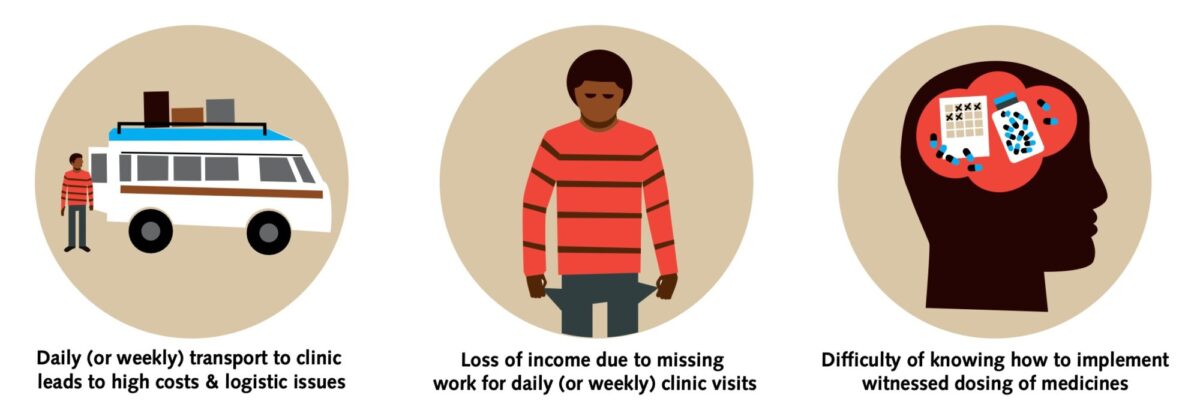
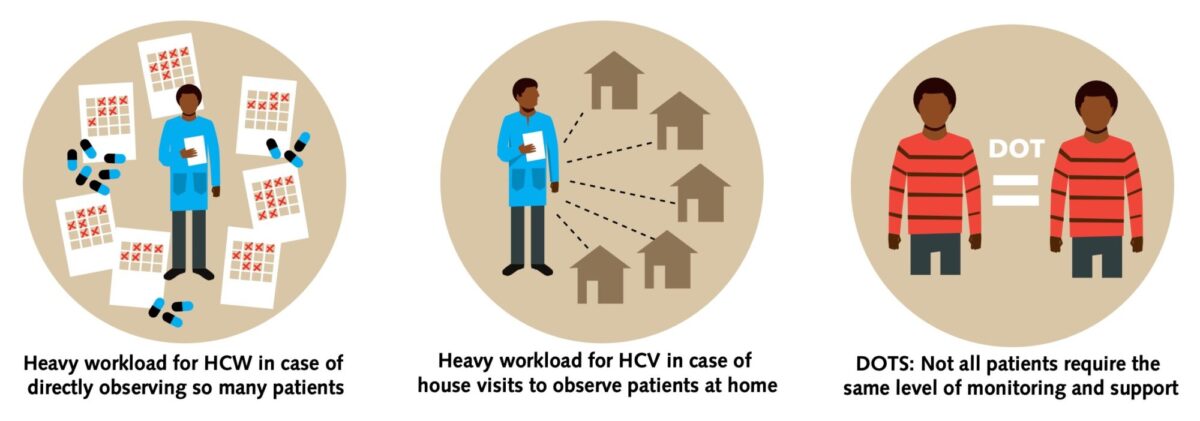
Improving TB adherence through digital technologies
In the last few years, several technologies have been developed (see textboxes) that can support patient-centred observation, and provide healthcare workers (HCWs) with accurate, real-time, and detailed dosing histories for people on TB treatment. Accurate patient dosing histories allow HCWs to make data-driven decisions and provide patients with personalised care, including counselling to improve their treatment adherence.
TB treatment outcomes are highly dependent on proper medication adherence. With the availability of affordable and scalable digital technologies, there is a rapidly growing interest in using these to improve adherence to treatment.
KNCV support for digital adherence technologies (DATS)
As an implementer and technical assistance organization, KNCV Tuberculosis Foundation is closing the gap in terms of global and country-level evidence creation as well as the development of operational guidance for the use of DATs-enabled interventions. Funded by the TB REACH initiative of the global Stop TB partnership, KNCV is implementing projects in the Philippines, Tanzania and Ukraine that aim to demonstrate how to customize DATs to the local context and how to integrate these technologies into standard practices of TB care. In addition, these projects assess the feasibility, acceptability by patients and health care providers, and the accuracy of DATs, as well as the impact of DATs interventions on adherence behaviour and treatment outcomes.[1]
KNCV is one of the frontrunners when it comes to implementing and utilizing digital health solutions for TB control. As lead partner of the ASCENT consortium, we are finalizing a comprehensive four-year project proposal to catalyse global and country uptake and equitable access to DATs by addressing three main access barriers: (i) demand and adoption, (ii) affordability, and (iii) supply and procurement. The ASCENT project includes five countries- Ethiopia, Philippines, South Africa, Tanzania and Ukraine – and builds on the experience of our ongoing TB REACH demonstration projects. The ASCENT project implements and utilizes an open-source adherence platform, capable of linking several digital adherence technologies (Fig. 3) in diverse geographic, cultural and infrastructural settings.
While the implementation of DATs is not a panacea to fix the root causes of TB (e.g. health inequity, human behaviour, health system shortcomings, drugs toxicity), we believe that DATs can contribute to solving some of the underlying challenges to treatment adherence by promoting better patient self-management and providing an alternative for ‘observed’ dosing of TB medication. This, in turn, would empower patients and offer providers a wider variety of options for outpatient treatment management. At their core, these technologies offer the flexibility and customizability required to enable context-specific features for each country and patient/clinician preference. For the health system, DATs can help improve efficiencies by continuous and automatic detection of patients who fail to adhere to their treatment and who are therefore most at risk of poor treatment outcomes. This allows HCWs to address patient concerns or barriers, suggest specific steps to improve adherence, and mitigate potential loss to follow-up. In this way, DATs become part of an integral package of treatment adherence interventions offered to TB patients. Also, by supplementing or replacing traditional facility-based DOT, it can provide TB patients with a more diverse set of treatment administration options.
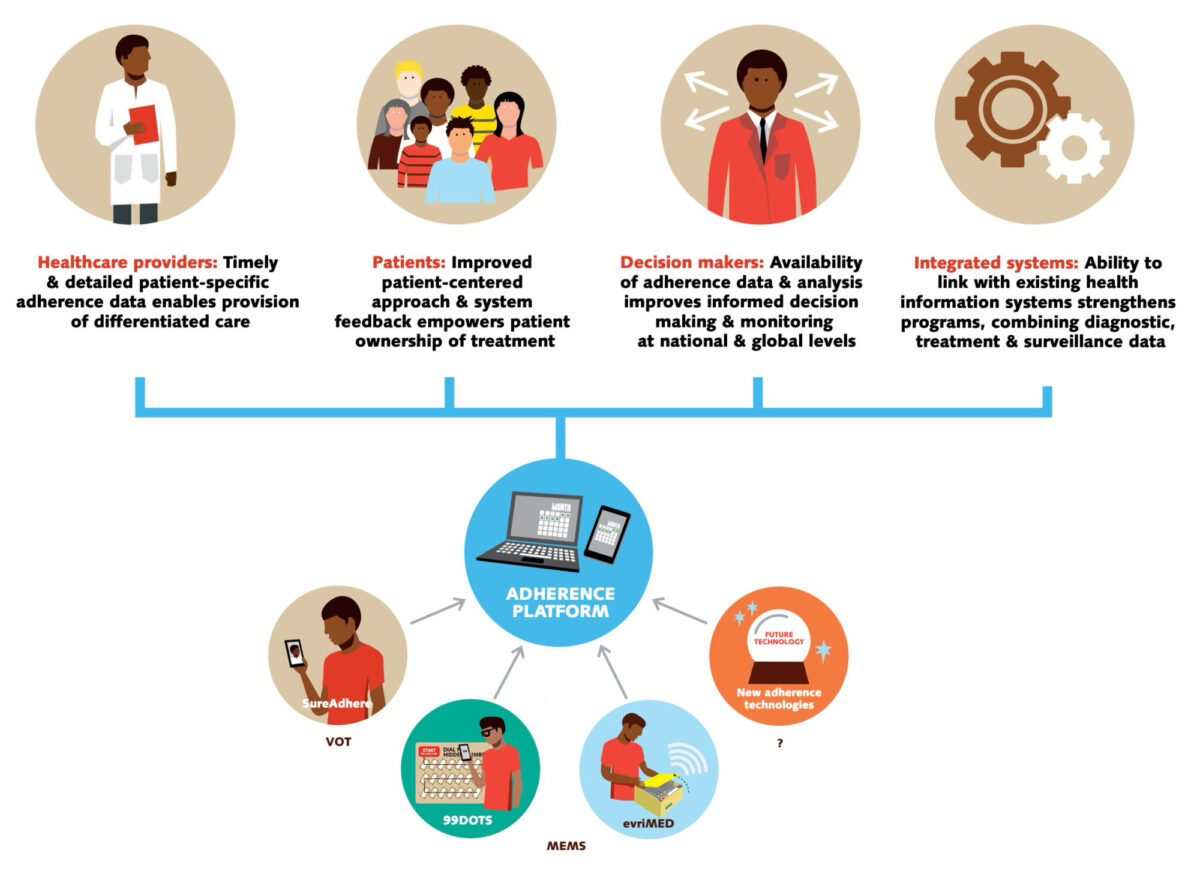
99DOTS: a medication event monitoring system via phone call / SMS
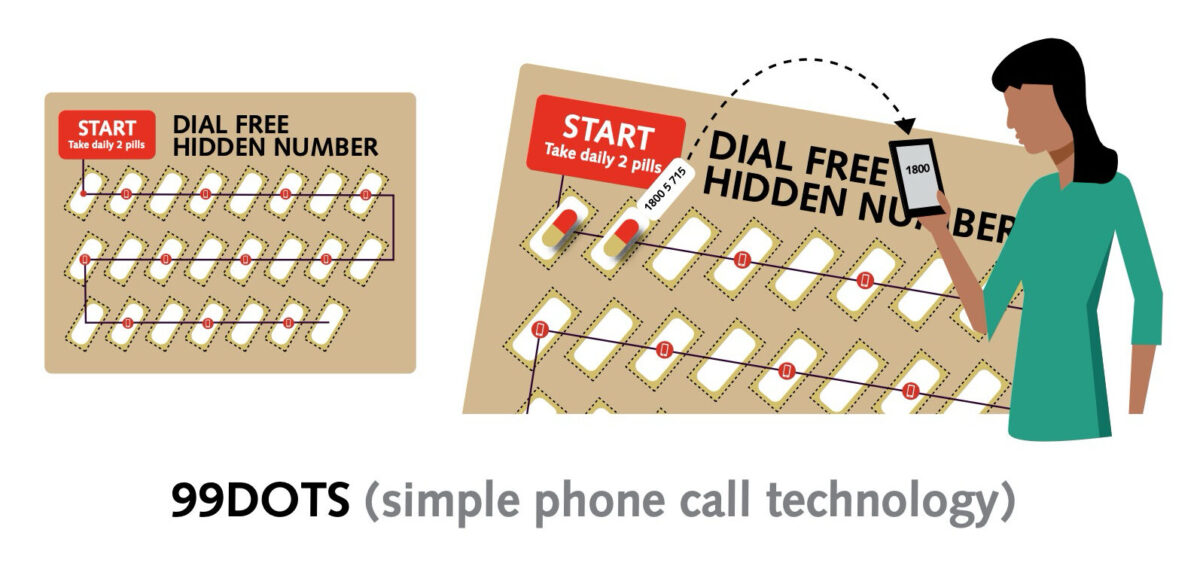
99DOTS pairs customized medication packaging with basic phone call / SMS technology to provide accurate, real-time data on patient treatment adherence. In this approach, existing Fixed-Dose Combination (FDC) antibiotic medication blister packs are repackaged in a custom cardstock sleeve with a series of unpredictable hidden toll-free phone numbers or SMS codes that are revealed each time a patient takes out their pills for the day. Patients engage with 99DOTS by placing a free call or sending a free SMS daily to the revealed number, at which point the system will automatically log their medication intake on the adherence platform. The modality of calling versus texting, as well as the language, dimensions and design iconography of the sleeves can be customized to each country context. This DAT is best suited for patients receiving their TB medication in standardized FDC blisters.[2]
evriMED medication event monitoring system via sim-enabled sensor

evriMED is a digital medication monitor that combines the functionality of a low-cost medication box with a small-scale, battery-powered sensor and mobile data connection. Patients store and organize their TB medications in the box, and when they open the box for daily medication intake, the sensor is activated and sends dosing event information in real-time to the adherence platform using the mobile data connection. When outside of mobile signal connection, opening events are stored in the device memory for later upload. The box can be fully customized to include treatment-specific instructions and its small LED display and speaker enable configurable audio-visual reminders. This DAT is appropriate for patients that take non-injectable medications; it is particularly well-suited for drug-resistant TB patients, as the box format is medication-agnostic and appropriate for storing the diverse types of regimens.[3]
Video supported treatment (VOT)
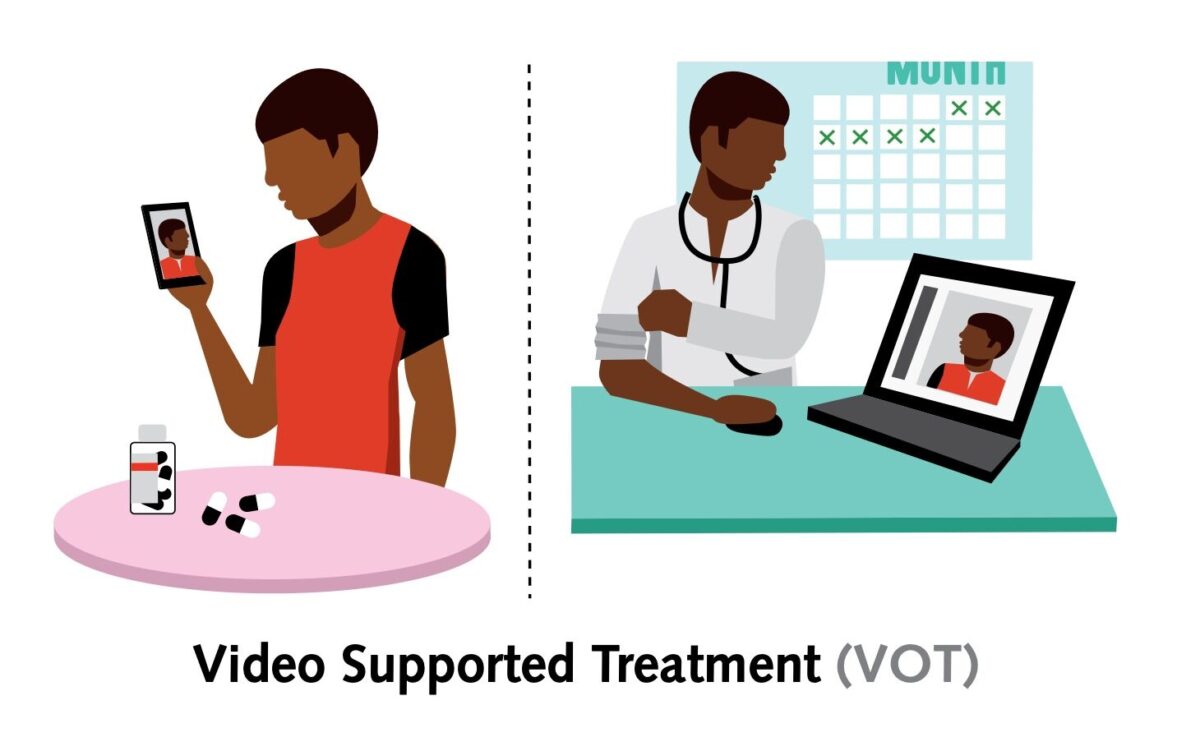
A phone and tablet application (app) that utilizes video recording and mobile communication to remotely monitor and support TB medication intake. Using an asynchronous video approach (in contrast to synchronous ‘live’ video), patients are guided to record videos of themselves when taking their daily medication. These videos are automatically synchronized via a secure mobile connection with the adherence platform, where they are then reviewed by the patient’s health care provider and marked as complete. While the other DATS rely more on the technology as a proxy for daily dosing, VOT is the closest approach to ‘remote’ DOT. It can be used for all treatment regimens (drug sensitive TB, drug resistant TB and latent TB infections), but requirements for smartphone devices, mobile connectivity infrastructure, and technology literacy mean it is not well-suited for all patients and contexts.[4]
References
- https://www.kncvtbc.org/en/2018/12/20/kncv-starts-99dots-in-the-philippines/
- https://www.99dots.org/
- https://www.wisepill.com/
- http://www.sureadhere.com/


















































